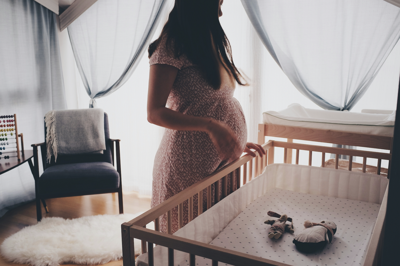
Children who were exposed to an additional 0.68 milligrams per liter of fluoride in the womb were 1.83 times more likely to show behavioral problems. Photo by Ömürden Cengiz
Exposure to fluoride, a naturally occurring mineral that is found mostly in water and toothpaste, has been linked to an increased risk of childhood behavioral problems. The newly published study by the Keck School of Medicine of the University of Southern California (USC) found that pregnant mothers who are exposed to fluoride during their pregnancy deal with increased odds of their children experiencing social, emotional and behavioral functioning problems at age three, such as anxiety, difficulty regulating emotions, ADHD and other complaints such as stomachaches and headaches.
The findings were based on a deep analysis involving 229 mother-child pairs living in communities with typical fluoride exposure levels for pregnant women. It is the first study in the United States to examine associations between prenatal fluoride exposure and parent-reported child neurobehavioral issues.
The provisional number of births in the U.S. in 2023 was 3,591,328, down 2% from 2022. The number of births declined for American Indian and Alaska Native women, 4% for Black women, 3% for white women, and 2% for Asian women from 2022 to 2023.
Latino birth rates were the only ones that increased in the past year.
“Women with higher fluoride exposure levels in their bodies during pregnancy tended to rate their three-year-old children higher on overall neurobehavioral problems and internalizing symptoms, including emotional reactivity, anxiety and somatic complaints,'' Tracy Bastain, an associate professor of clinical population and public health sciences at the Keck School of Medicine, said.
According to the United Health Foundation, 72% of the country’s population is served by community water systems that use fluoridated water. The state of California currently ranks 39th overall in water fluoridation among the 50 states.
“Our findings are noteworthy, given that the women in this study were exposed to pretty low levels of fluoride -- levels that are typical of those living in fluoridated regions within North America,'' said Ashley Malin, an assistant professor of epidemiology at the University of Florida's College of Public Health and Health Professions and College of Medicine.
In 2017, Mexico also conducted a similar study of fluoride exposure. The study, which originated in Mexico City, showed that higher prenatal fluoride exposure, in the general range of exposures reported for other general population samples of pregnant women and nonpregnant adults, was associated with lower scores on tests of cognitive function in the children at age four and six–12 years of age.
The current study, which was funded in part by the National Institutes of Health and published in JAMA Network Open, used data from the Maternal and Developmental Risks from Environmental and Social Stressors Center, or MADRES, which follows predominantly low-income Latino families in Los Angeles from pregnancy throughout childhood.
“The overall goal of the center is reducing the effects of environmental contaminants on the health and well-being of marginalized communities,'' said Bastain, who also co-directs MADRES.
Bastain, who was also the senior author of the study, said researchers collected urine samples from MADRES participants during their third trimester of pregnancy. Urine samples are the most widely used measure of individual fluoride exposure in epidemiological studies, including those assessing effects on fetal brain development.
Children were then assessed at age three using the Preschool Child Behavior Checklist, which uses parent reports to measure a child’s social and emotional functioning. Researchers conclude that children who were exposed to an additional 0.68 milligrams per liter of fluoride in the womb were 1.83 times more likely to show behavioral problems considered to be clinically significant or borderline clinically significant.
Specifically, children exposed to more fluoride had more problems with emotional reactivity, somatic complaints, (such as headaches and stomachaches), anxiety and symptoms linked to autism.
Although the study did not list any official recommendations for limiting fluoride consumption during pregnancy at a local and state level, the researchers hope these findings can help stimulate change and bring forward new studies on fluoride.
"There are no known benefits to the fetus from ingesting fluoride,” Malin said. “And yet, now we have several studies conducted in North America suggesting that there may be a pretty significant risk to the developing brain during that time.”
Fluoride water in the U.S. dates back to 1945. That year, Grand Rapids, Michigan, became the first city in the world to fluoridate its drinking water. Subsequent studies, which lasted more than 10 years, showed that fluoride helps with tooth decay. A scientific breakthrough showed that the caries rate among Grand Rapids children born after fluoride was added to the water supply dropped by more than 60 percent.
Today, almost 80 years later, almost all toothpastes on the market contain fluoride as an active ingredient and water fluoridation is a normal part of society.
The Centers for Disease Control and Prevention recommends but does not mandate state and local water system personnel to take daily measurements of fluoride levels in their water distribution systems.











(0) comments
Welcome to the discussion.
Log In
Keep it Clean. Please avoid obscene, vulgar, lewd, racist or sexually-oriented language.
PLEASE TURN OFF YOUR CAPS LOCK.
Don't Threaten. Threats of harming another person will not be tolerated.
Be Truthful. Don't knowingly lie about anyone or anything.
Be Nice. No racism, sexism or any sort of -ism that is degrading to another person.
Be Proactive. Use the 'Report' link on each comment to let us know of abusive posts.
Share with Us. We'd love to hear eyewitness accounts, the history behind an article.